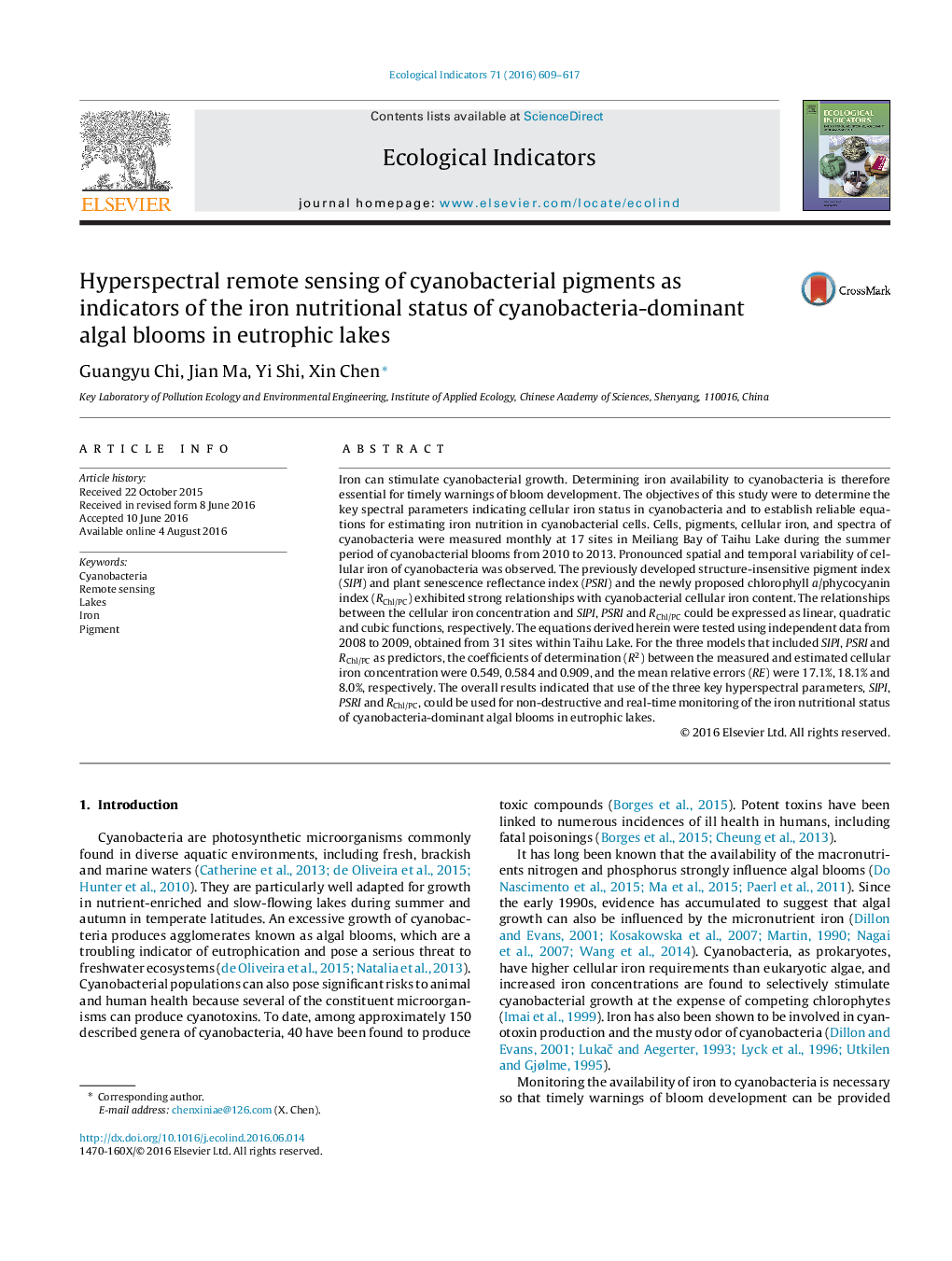| Article ID | Journal | Published Year | Pages | File Type |
|---|---|---|---|---|
| 6293019 | Ecological Indicators | 2016 | 9 Pages |
â¢Iron availability will change pigment concentrations and ratios of cyanobacteria.â¢Pigment-ratio spectral indices are sensitive to cyanobacterial cellular iron.â¢The proposed models for cyanobacterial cellular iron monitoring performed well.
Iron can stimulate cyanobacterial growth. Determining iron availability to cyanobacteria is therefore essential for timely warnings of bloom development. The objectives of this study were to determine the key spectral parameters indicating cellular iron status in cyanobacteria and to establish reliable equations for estimating iron nutrition in cyanobacterial cells. Cells, pigments, cellular iron, and spectra of cyanobacteria were measured monthly at 17 sites in Meiliang Bay of Taihu Lake during the summer period of cyanobacterial blooms from 2010 to 2013. Pronounced spatial and temporal variability of cellular iron of cyanobacteria was observed. The previously developed structure-insensitive pigment index (SIPI) and plant senescence reflectance index (PSRI) and the newly proposed chlorophyll a/phycocyanin index (RChl/PC) exhibited strong relationships with cyanobacterial cellular iron content. The relationships between the cellular iron concentration and SIPI, PSRI and RChl/PC could be expressed as linear, quadratic and cubic functions, respectively. The equations derived herein were tested using independent data from 2008 to 2009, obtained from 31 sites within Taihu Lake. For the three models that included SIPI, PSRI and RChl/PC as predictors, the coefficients of determination (R2) between the measured and estimated cellular iron concentration were 0.549, 0.584 and 0.909, and the mean relative errors (RE) were 17.1%, 18.1% and 8.0%, respectively. The overall results indicated that use of the three key hyperspectral parameters, SIPI, PSRI and RChl/PC, could be used for non-destructive and real-time monitoring of the iron nutritional status of cyanobacteria-dominant algal blooms in eutrophic lakes.
